About MODERN JEWISH MUSIC
While some elements of Jewish music may originate in biblical times, differences of rhythm and sound can be found among later Jewish communities that have been musically influenced by location. In the nineteenth century, religious reform led to composition of ecclesiastic music in the styles of classical music.
At the same period, academics began to treat the topic in the light of ethnomusicology. Edward Seroussi has written, "What is known as 'Jewish music' today is thus the result of complex historical processes".A number of modern Jewish composers have been aware of and influenced by the different traditions of Jewish music.
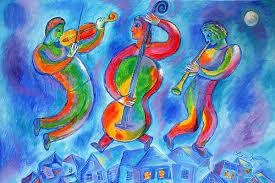 Religious Jewish music
Religious Jewish musicReligious Jewish music in the biblical period
Further information: History of music in the biblical period
The history of religious Jewish music spans the evolution of cantorial, synagogal, and Temple melodies since Biblical times.
The earliest synagogal music of which we have any account was based on the system used in the Temple in Jerusalem.
The Mishnah gives several accounts of Temple music. According to the Mishnah, the regular Temple orchestra consisted of twelve instruments, and a choir of twelve male singers.
The instruments included the kinnor (lyre), nevel (harp), tof (tambourine), shofar (ram's horn), ḥatzotzᵊrot (trumpet) and three varieties of pipe, the chalil, alamoth and the uggav.
The Temple orchestra also included a cymbal (tziltzal) made of copper.[5] The Talmud also mentions use in the Temple of a pipe organ (magrepha), and states that the water organ was not used in the Temple as its sounds were too distracting.
No provable examples of the music played at the Temple have survived. However, there is an oral tradition that the tune used for Kol Nidrei was sung in the temple.
After the destruction of the Temple in 70 AD and the subsequent dispersion of the Jews to Babylon and Persia, versions of the public singing of the Temple were continued in the new institution of the synagogue.
Three musical forms were identified by scholars of the period, involving different modes of antiphonal response between cantor congregation: the cantor singing a half-verse at a time, with the congregation making a constant refrain; the cantor singing a half-verse, with the congregation repeating exactly what he had sung; and the cantor and congregation singing alternate verses.
All of these forms can be discerned in parts of the modern synagogue service.
Jewish prayer modes
Jewish liturgical music is characterized by a set of musical modes. These modes make up musical nusach, which serves to both identify different types of prayer, as well as to link those prayers to the time of year, or even time of day in which they are set.
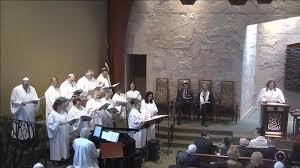
There are three main modes, as well as a number of combined or compound modes. The three main modes are called Ahavah Rabbah, Magein Avot and Adonai Malach. Traditionally, the cantor (chazzan) improvised sung prayers within the designated mode, while following a general structure of how each prayer should sound.
There was no standard form of musical notation utilised by the Jews and these modes and synagogue melodies derived from them were therefore handed down directly, typically from a chazzan to his apprentice meshorrer (descant).
Since the late eighteenth century, many of these chants have been written down and standardized, yet the practice of improvisation still exists to this day.
The synagogal reading of the parashah (the weekly extract from the Torah) and the haftarah (section from the Prophets), may recall the melodic tropes of the actual Temple service.
Ashkenazic Jews named this official cantillation 'neginot' and it is represented in printed Hebrew versions of the Bible by a system of cantillation marks (sometimes referred to as neumes).
In practice the cantillation often echoes the tones and rhythms of the countries and ages in which Jews lived, notably as regards the modality in which the local music was based.
Traditional religious music.
Synagogues following traditional Jewish rites do not employ musical instruments as part of the synagogue service. Traditional synagogal music is therefore purely vocal. The principal melodic role in the service is that of the hazzan (cantor).
Responses of the congregation are typically monophonic—the introduction of a choir singing in harmony was largely a nineteenth-century innovation. However, during the mediaeval period among Ashkenazi Jews there developed the tradition of the hazzan being accompanied for certain prayers by a bass voice (known in Yiddish as singer) and a descant (in Yiddish, meshorrer).
This combination was known in Yiddish as keleichomos.
"Emet El Shmeha", traditional Jewish 17th century song.
There are many forms of song which are used in Jewish religious services and ceremonies. The following are notable examples.
With the piyyutim (liturgical poems—singular: piyut), dating from the first millennium after the destruction of the Temple, one stream of Jewish synagogal music began to crystallize into definite form. The hazzan sang the piyyutim to melodies either selected by themselves or drawn from tradition. Piyyutim have been written since Mishnaic times.
Most piyyutim are in Hebrew or Aramaic, and most follow some poetic scheme, such as an acrostic following the order of the Hebrew alphabet or spelling out the name of the author. A well-known piyyut is Adon Olam ("Master of the World"), sometimes attributed to Solomon ibn Gabirol in 11th century Spain.
Pizmonim are traditional Jewish songs and melodies praising God and describing certain aspects of traditional religious teachings. Pizmonim are traditionally associated with Middle Eastern Sephardic Jews, although they are related to Ashkenazi Jews' zemirot (see below).
One tradition is associated with Jews descended from Aleppo, though similar traditions exist among Iraqi Jews (where the songs are known as shbaִhoth, praises) and in North African countries. Jews of Greek, Turkish and Balkan origin have songs of the same kind in Ladino, associated with the festivals: these are known as coplas.
Some melodies are quite old, while others may be based on popular Middle Eastern music, with the words composed specially to fit the tune.
Zemirot are hymns, usually sung in the Hebrew or Aramaic languages, but sometimes also in Yiddish or Ladino. The words to many zemirot are taken from poems written by various rabbis and sages during the Middle Ages. Others are anonymous folk songs.
The baqashot are a collection of supplications, songs, and prayers that have been sung for centuries by the Sephardic Aleppian Jewish community and other congregations every Sabbath eve from midnight until dawn.
The custom of singing baqashot originated in Spain towards the time of the expulsion, but took on increased momentum in the Kabbalistic circle in Safed in the 16th century, and were spread from Safed by the followers of Isaac Luria (16th century).
Baqashot reached countries all round the Mediterranean and even became customary for a time in Sephardic communities in western Europe, such as Amsterdam and London.
Nigun (pl. nigunim) refers to religious songs and tunes that are sung either by individuals or groups; they are associated with the Hassidic movement. Nigunim are generally wordless.
Eighteenth- and nineteenth-century synagogue music
Changes in European Jewish communities, including increasing political emancipation and some elements of religious reform, had their effects on music of the synagogue.
By the late eighteenth century, music in European synagogues had sunk to a low standard. The Jewish scholar Eric Werner notes that among the European Ashkenazi communities of Europe "between 1660 and 1720 the musical tradition was waning, and the second half of the eighteenth century witnessed its worst decay".
The historian of Jewish music Abraham Zevi Idelsohn considers that "Eighteenth century manuscripts of Synagogue song display a striking monotony of style and texts".
In this context the English music historian Charles Burney visiting the Ashkenazi synagogue of Amsterdam in 1772, gave the opinion of one who was clearly ignorant of synagogue music (but did not regard that as a disqualification for comment) that the service resembled "a kind of tol- de rol, instead of words, which to me, seemed very farcical".
Others in England were more sympathetic to the synagogue service. The singing of the chazan Myer Lyon inspired the Methodist minister Thomas Olivers in 1770 to adapt the melody of the hymn Yigdal for a Christian hymn, The God of Abraham Praise.
Many synagogue melodies were used by Isaac Nathan in his 1815 settings of Lord Byron's Hebrew Melodies, and the popularity of this work drew the attention of Gentiles for the first time to this music (although in fact many of Nathan's melodies were not Jewish in origin, but contrafacta adapted from European folk melodies).
Franz Schubert around 1828 made a choral setting of Psalm 92 in Hebrew for the Vienna chazan Salomon Sulzer.[18] German congregations commissioned works from other Gentile composers, including Albert Methfessel (1785–1869).
Later in the century, as synagogues began to utilize choirs singing in Western harmony, a number of hazzanim, who had received formal training in Western music, began to compose works for the synagogue, many of which are still in use today in the congregations of their countries.
These included Sulzer in Vienna, Samuel Naumbourg in Paris, Louis Lewandowski in Berlin, and Julius Mombach in London.
Contemporary Jewish religious music
Secular Jewish music
Secular Jewish music (and dances) have been influenced both by surrounding Gentile traditions and Jewish sources preserved over time.
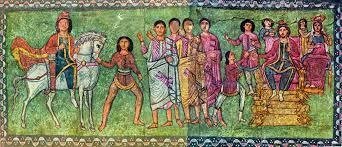
Klezmer
Around the 15th century, a tradition of secular (non-liturgical) Jewish music was developed by musicians called kleyzmorim or kleyzmerim by Ashkenazi Jews in Eastern Europe.
The repertoire is largely dance songs for weddings and other celebrations. They are typically in Yiddish.
Sephardic/Ladino
Sephardic music was born in medieval Spain, with canciones being performed at the royal courts. Since then, it has picked up influences from across Spain, Morocco, Argentina, Turkey, Greece and various popular tunes from Spain and further abroad.
There are three types of Sephardic songs—topical and entertainment songs, romance songs and spiritual or ceremonial songs. Lyrics can be in several languages, including Hebrew for religious songs, and Ladino.
These song traditions spread from Spain to Morocco (the Western Tradition) and several parts of the Ottoman Empire (the Eastern Tradition) including Greece, Jerusalem, the Balkans and Egypt. Sephardic music adapted to each of these locals, assimilating North African high-pitched, extended ululations; Balkan rhythms, for instance in 9/8 time; and the Turkish maqam mode.
Jewish art music.
Preclassical, classical, romantic and 20th-century composers
Salamone Rossi (1570 – c. 1630) of Mantua composed a series of choral settings called "The Songs of Solomon", based on Jewish liturgical and biblical texts.
Most art musicians of Jewish origin in the 19th century composed music that cannot be considered Jewish in any sense.
In the words of Peter Gradenwitz, from this period onwards, the issue is "no longer the story of Jewish music, but the story of music by Jewish masters." Jacques Offenbach (1819–1880), a leading composer of operetta in the 19th century, was the son of a cantor, and grew up steeped in traditional Jewish music.
Yet there is nothing about his music which could be characterized as Jewish in terms of style, and he himself did not consider his work to be Jewish.
Felix Mendelssohn, the grandson of the Jewish philosopher Moses Mendelssohn, continued to acknowledge his Jewish origins, even though he was baptized as a Reformed Christian at the age of seven. He occasionally drew inspiration from Christian sources, but there is nothing characteristically Jewish about any of his music.
The Jewish national revival in art music
Main article: Jewish art music
At the end of the 19th and beginning of the 20th centuries many Jewish composers sought to create a distinctly Jewish national sound in their music. Notable among these were the composers of the St. Petersburg Society for Jewish Folkmusic.
Led by composer-critic Joel Engel, these graduates of the St. Petersburg and Moscow Conservatories rediscovered their Jewish national roots, and created a new genre of Jewish art music. Inspired by the nationalist movement in Russian music, exemplified by Rimsky-Korsakov, Cui and others, these Jewish composers set out to the "shtetls"—the Jewish villages of Russia—and meticulously recorded and transcribed thousands of Yiddish folksongs.
They then set these songs to both vocal and instrumental ensembles.
The resulting music is a marriage between often melancholy and "krekhtsen" (moaning) melodies of the shtetl with late Russian romantic harmonies of Scriabin and Rachmaninoff.
The Jewish national revival in music was not only in Russia.
A number of Western European composers took an interest in their Jewish musical roots, and tried to create a unique Jewish art style. Ernest Bloch (1880–1959), a Swiss composer who emigrated to the United States, composed Schelomo for cello and orchestra, Suite Hebraique for viola and piano, and Sacred Service, which is the first attempt to set the Jewish service in a form similar to the Requiem, for full orchestra, choir and soloists.
Bloch described his connection to Jewish music as intensely personal:
It is not my purpose, nor my desire, to attempt a 'reconstitution' of Jewish music, or to base my work on melodies more or less authentic. I am not an archeologist.... It is the Jewish soul that interests me ... the freshness and naiveté of the Patriarchs; the violence of the Prophetic books; the Jewish savage love of justice...
As a child in Aix-en-Provence, Darius Milhaud (1892–1974) was exposed to the music of the Provençal Jewish community. "I have been greatly influenced by the character" of this music, he wrote.[26] His opera Esther de Carpentras draws on this rich musical heritage.
Mario Castelnuovo-Tedesco (1895–1968), an Italian composer who immigrated to America on the eve of World War II, was strongly influenced by his Sephardic Jewish upbringing. His second violin concerto draws on Jewish themes, as do many of his songs and choral works: these include a number of songs in Ladino, the language of Sephardic Jews.
Israeli music
Music of Israel
Art music in Mandatory Palestine and Israel
The 1930s saw an influx of Jewish composers to British Mandatory Palestine, later Israel, among them musicians of stature in Europe.
These composers included Paul Ben-Haim, Erich Walter Sternberg, Marc Lavry, Ödön Pártos, and Alexander Uriah Boskovich.
These composers were all concerned with forging a new Jewish identity in music, an identity which would suit the new, emerging identity of Israel. While the response of each of these composers to this challenge was intensely personal, there was one distinct trend to which many of them adhered: many of these and other composers sought to distance themselves from the musical style of the Klezmer, which they viewed as weak and unsuitable for the new national ethos. Many of the stylistic features of Klezmer were abhorrent to them.
"Its character is depressing and sentimental", wrote music critic and composer Menashe Ravina in 1943. "The healthy desire to free ourselves of this sentimentalism causes many to avoid this...".
From these early experiments a large corpus of original Israeli art music has been developed. Modern Israeli composers include Betty Olivero, Tsippi Fleischer, Mark Kopytman and Yitzhak Yedid.
Israeli folk
From the earliest days of Zionist settlement, Jewish immigrants wrote popular folk music. At first, songs were based on borrowed melodies from German, Russian, or traditional Jewish folk music with new lyrics written in Hebrew. Starting in the early 1920s, however, Jewish immigrants made a conscious effort to create a new Hebrew style of music, a style that would tie them to their earliest Hebrew origins and that would differentiate them from the style of the Jewish diaspora of Eastern Europe, which they viewed as weak.
This new style borrowed elements from Arabic and, to a lesser extent, traditional Yemenite and eastern Jewish styles: the songs were often homophonic (that is, without clear harmonic character), modal, and limited in range.
"The huge change in our lives demands new modes of expression", wrote composer and music critic Menashe Ravina in 1943. "... and, just as in our language we returned to our historical past, so has our ear turned to the music of the east ... as an expression of our innermost feelings."
1:39
Your Land, a Hebrew song adapted to a traditional Bedouin Melody.
The youth, labor and kibbutz movements played a major role in musical development before and after the establishment of Israeli statehood in 1948, and in the popularization of these songs. The Zionist establishment saw music as a way of establishing a new national identity, and, on a purely pragmatic level, of teaching Hebrew to new immigrants.
The national labor organization, the Histadrut, set up a music publishing house that disseminated songbooks and encouraged public sing-alongs (שירה בציבור). This tradition of public sing-alongs continues to the present day, and is a characteristic of modern Israeli culture.
Mizrahi
Mizrahi music
Mizrahi music usually refers to the new wave of music in Israel which combines Israeli music with the flavor of Arabic and Mediterranean (especially Greek) music.
Typical Mizrahi songs will have a dominant violin or string sound as well as Middle Eastern percussion elements. Mizrahi music is usually high pitched. Zohar Argov is a popular singer whose music typifies the Mizrahi music style.
Non-Jewish composers using Jewish music
Sergei Prokofiev: Overture on Hebrew Themes 11:01
Performed by members of the Advent Chamber Orchestra
A number of non-Jewish composers have adapted Jewish music to their compositions. They include:
- Maurice Ravel wrote Mélodies hébraïques for violin and piano.
- Max Bruch, a German Protestant, (but a student of the German Jewish composer Ferdinand Hiller) made an arrangement, Kol Nidrei, of the Jewish Yom Kippur prayer Kol Nidre for cello and orchestra.
- Sergei Prokofiev wrote Overture on Hebrew Themes, an arrangement of traditional Jewish folksongs for clarinet, string quartet, and piano.
- Dmitri Shostakovich incorporated elements of Jewish music in some of his compositions. Most notable are the song cycle From Jewish Folk Poetry, and the 13th symphony, titled Babi Yar
ISRAEL MUSICAL HERITAGE
Israel has an immense musical heritage to pay attention to. Both regional and religious influences enhanced the depth and the richness of Israeli music throughout the years.Lots of instruments we know today are rooted in the history of Israel and its neighboring lands.
Israel has a unique musical culture, and musicians have been looking for distinctive stylistic components to characterize the burgeoning national spirit for about 150 years in regard to coexisting Jewish and non-Jewish traditions.
Israeli music offers a lot for ethnic music enthusiasts.
The instruments included theMusical genre
kinnor (lyre),
nevel (harp),
tof (tambourine),
shofar (ram's horn),
ḥatzotzᵊrot (trumpet) and
Three varieties of pipe,
-the chalil,
-alamoth and
-the uggav.
The Temple orchestra also included a cymbal (tziltzal) made of copper.
What are the 3 significant instrument in Israel?
1. Qanun,
2.Oud, and
3. The Goblet Drum
are the 3 most significant traditional instruments in Israel.
What are the famous musical instrument of Israel?
The lyre (Hebrew: kinnor) and harp (Hebrew: nevel) were the primary chordophones in ancient Israel.
While these instruments are very close in design, there are important differences. The Israelite lyre has a basic U-shaped body.
What is the name of the Jewish musical?
Klezmer
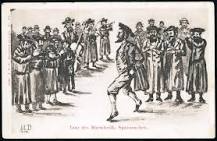
Klezmer (Yiddish: קלעזמער) is an instrumental musical tradition of the Ashkenazi Jews of Central and Eastern Europe.
The essential elements of the tradition include dance tunes, ritual melodies, and virtuosic improvisations played for listening; these would have been played at weddings and other social functions.
Cultural origins: Ashkenazic Jewish ceremonies, especially weddings, in Eastern Europe
Other names: Jewish instrumental folk music, Freylekh music
Parent genres: Romani music, Turkish music
Jewish music style
Jewish music is the music and melodies of the Jewish people. There exist both traditions of religious music, as sung at the synagogue and domestic prayers, and of secular music, such as klezmer
Do synagogues have musical instruments?
Worship services in the Reform movement have long utilized organ, piano and guitar, and the service instituted at Temple Emeth would represent an expansion of the role and presence of music.
The band plays (in different configurations) on all songs, and congregants are encouraged to sing and dance.
Do Jews worship with music?
Music has played an important role in Jewish worship and secular life. Explore related collections and enjoy a playlist of Jewish music from Smithsonian Folkways.
Why do Orthodox not use instruments?
Our worship in the Church is to reflect that which is already taking place in the Kingdom of heaven.
That is why we do not use musical instruments, since even though their sounds may be beautiful and all that, they do not verbally, logically, or rationally praise God in the strict sense of what praise is all about.
Why is it called a jews harp?
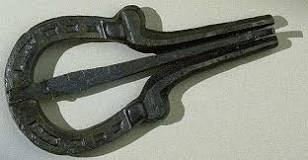
The origin of Jew's is uncertain. Some have connected it to the Cleveland dialectal gew-gaw, related to the Old Norse giga (compare modern Swedish giga).
Others have suggested it derives from an early English or German word jue or jaws.
The synonym jaw harp may have therefore come first.
What is God's favorite instrument?
Harp and God's Presence.
God is attracted to the sound of a harp worshipping Him. In 2 Kings 3:15, it says that the playing of a harp brought God's Presence and that His hand came upon Elisha. An interesting study may be made in the Bible about God's Presence.
God is attracted to the sound of a harp worshipping Him. In 2 Kings 3:15, it says that the playing of a harp brought God's Presence and that His hand came upon Elisha. An interesting study may be made in the Bible about God's Presence.
Regarding Israel’s geographical position, their music highly interacted with Arabic, Persian, Palestinian, Spanish, and Egyptian folk music and cultures.
Israel has a wide range of musical instruments that are commonly used in Middle Eastern traditions and cultures.
In Israeli music, there are many different instrument types with the main focus on stringed instruments and percussion instruments.
What Are The Main Musical Instruments Of Israel?
There are a whole host of musical instruments from Israel, however the 9 most popular include:
- Kinnor (Jewish Lyre
- Shofar
- Oud
- Tabret (Timbrel)
- Goblet Drum
- Toph (Frame Drum)
- Qanun
- Sumponyah (Bagpipe)
- Sistrum (Rattles)
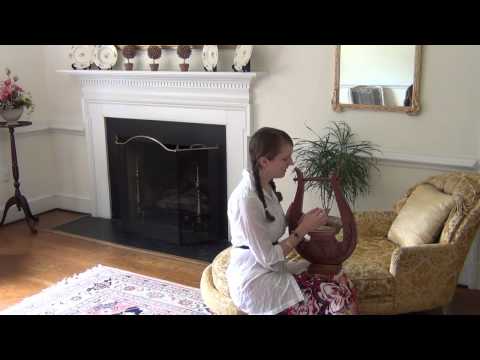
Kinnor is one of the ancient musical instruments of Israeli music that is holy for the Jewish culture and used in sacred music.
Also known as the Jewish Lyre, Kinnor is commonly mistranslated as a harp. Although they have similarities, lyres and harps differ in shape, size, sound, and playability.
The Jewish Lyre traditionally has 10 strings, but you can still find a variety of Kinnors with 3 to 12 strings depending on its size and design.
Kinnors are mostly small, and musicians use one of their hands to hold it on their lap and the other to play it, which is different than a harp. A harp can be played with two hands.
Historically, Kinnor’s are known as the origins of the lyres that we see different versions of it in almost every culture today.
2. Shofar
The Shofar is made of mostly male sheep horns and used for religious purposes in Jewish tradition.
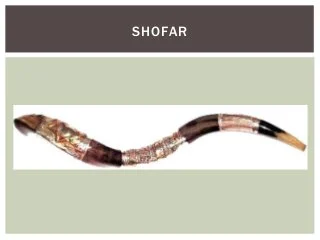 One of the earliest uses of the Shofar is to announce the Jubilee year and the new moon. There are certain experts who are only to blow the holy shofar in Jewish culture. They are known as ba’al tokeah -“the master of the blast.”
One of the earliest uses of the Shofar is to announce the Jubilee year and the new moon. There are certain experts who are only to blow the holy shofar in Jewish culture. They are known as ba’al tokeah -“the master of the blast.”The harmonics of the shofar vary from one to another. There are diverse shapes of shofars made from horns of different sheep species, and their finishes may have been differently made. Therefore they may produce different intervals and resonances.
3. Oud
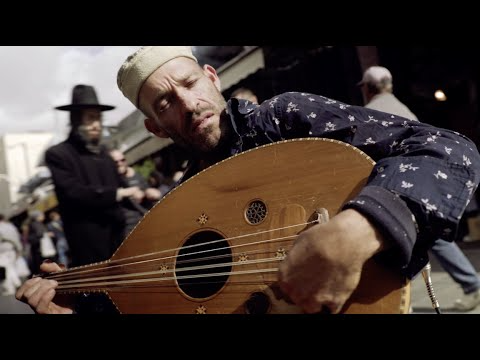
The Oud is the ancient form of the lute and the guitar. It belongs to the stringed instrument family and has a pear-shaped body, along with a deeply vibrant tone.
It commonly has 3 holes in the body. The Oud has a very small neck and has no frets, which is the main difference from the lute.
Also, by having no frets, the Oud allows sliding between pitches, which is very characteristic of this instrument and its sound.
The Oud is played with maqams, which are similar to various scales in western music. Oud is interbedded with Arabic music and continues to have a big influence on Jewish culture.
They are commonly tuned on single string courses like this: D2-G2-A2-D3-G3-C4 (low to high). However, there are various tuning traditions in different cultures.
The Turkish Oud, for example, tuned one whole step higher than the Arabian, therefore sounding more tight and harsh.
Arabian ouds are typically larger than their Turkish and Persian counterparts, providing a richer, deeper sound.
The Oud is played with a Risha, which is the oldest form of a guitar pick or plectrum, made from an eagles quill.
Today, the players commonly use a plastic or a bamboo plectrum to play the Oud.
4. Tabret (Timbrel)
The main percussion instrument of the Israel music instruments range is the Tabret, also known as the Timbrel in Hebrew, the Deff in Islam, and the Module in the Spanish culture. It resembles either a contemporary tambourine or a frame drum.
The Hebrew Bible uses the term “timbrel,” suggesting that the former refers to a wooden or metal hoop over which a parchment head is stretched. In contrast, the latter may refer to a tambourine with bells or jangles fastened at regular intervals in hoops.
5. Goblet Drum
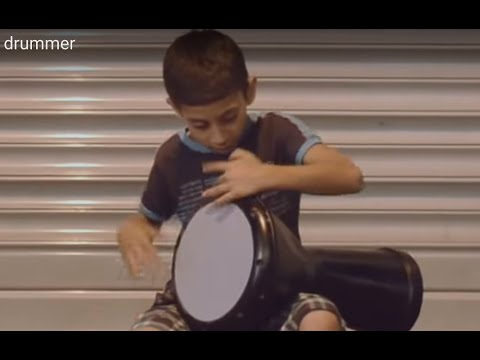
The Goblet drum is a great heritage instrument from Mesopotamian and Ancient Egyptian history and is also an inevitable part of Israeli musical instruments and culture.
The Goblet drum generates two distinct tones.
A “doom”, when the length of the fingers and palm are used to strike the center of the head it produces a deeper bass sound than when the hand is removed for an open sound. The second sound is referred to as the “tak”, which is a higher-pitched noise made by tapping the head’s edge with the fingertips.
6. Toph (Frame Drum)
Toph is the Hebrew version of the frame drum, which we can see almost in every culture. It is amongst the oldest instruments in recorded history and has been cited as the first drum ever created.
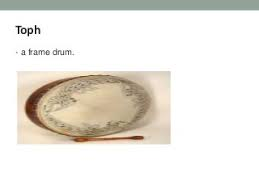 It has a single drumhead, which is often made of rawhide but can alternatively be synthetic, and while the drumhead is tacked into many frame drums, some have mechanical tuning.
It has a single drumhead, which is often made of rawhide but can alternatively be synthetic, and while the drumhead is tacked into many frame drums, some have mechanical tuning.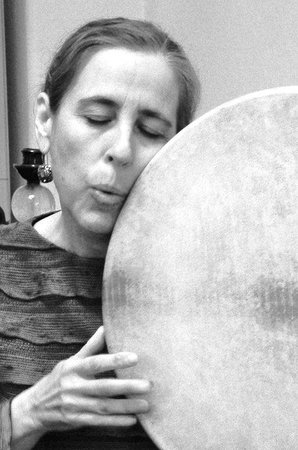
A shell is a circular wooden frame over which the drumhead is stretched. Rosewood, oak, ash, and other woods that have been bent and scarf joined together usually form the shell; however, some are also made of plywood or other man-made materials today.
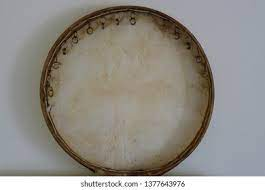
The frame may also be adorned with metal rings or jingles. In spiritual ceremonies, larger frame drums are typically played by men in various cultures, whereas medium-sized drums are typically played by women.
7. Qanun
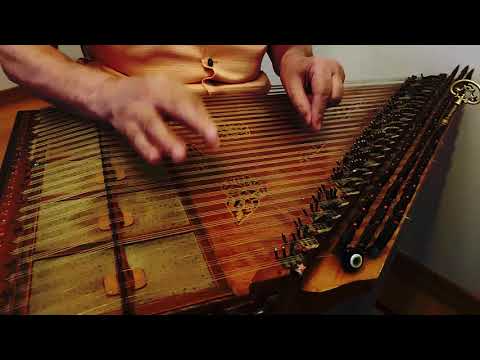
Arabic music has utilized the Qanun, a descendant of the ancient Egyptian harp since the ninth century.
See Also Dynamic vs Condenser Mics (Breaking Down The Tech)
It was first brought to Europe in the 12th century, and from the 14th through the 16th, it was known as a Psaltery or Zither in its European form. With Arabic music influences,
Qanun is widely used in Israeli music.
A flat board in the shape of a trapezoid serves as the foundation of the Qanun, where 81 strings are stretched in groups of three to create 24 treble chords with three chords per note.
The musician places the instrument flat on their knees or a table and uses their fingers or two plectra, one on each hand’s forefinger, to pluck the strings.
8. Sumponyah (Bagpipe)
The Sumponyah, which later became the Calabrian Zampogna, is one of the oldest instruments in the world. Its history goes back to the period of Babylon (500 BCE).
Although bagpipes can be found in many cultures, the Sumponyah is an essential instrument in Israeli culture. It is mainly a combination of a bag and chanters.
The bag is made from goat skin, traditionally with the hair on. Then shepherd pipes or chanters are attached to it to be able to blow in the bag and produce the holy sound.
9. Sistrum (Rattles)
The Sistrum comprises a handle and a U-shaped metal frame between 30 and 76 cm wide and is made of brass or bronze. Its movable crossbars’ tiny rings or loops of thin metal make a sound when shaken that ranges from a faint clank to a loud jangling.
Today, similar to how the tambourine is played in modern Evangelicalism, Romani song and dance, either on stage at a rock concert, the rhythmic shaking of the sistrum is connected to religious or ecstatic events. It was shaken as a sacred rattle in the worship of Hathor in ancient Egypt and used in rituals in Israel.
Jewish music styleJewish music is the music and melodies of the Jewish people. There exist both traditions of religious music, as sung at the synagogue and domestic prayers, and of secular music, such as klezmer